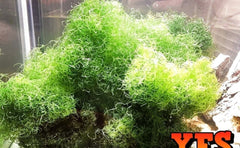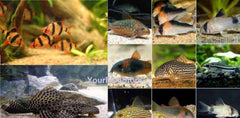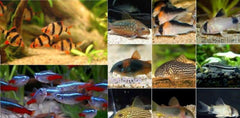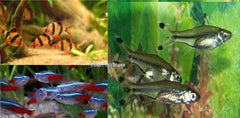X10 Assorted Sps & Lps Frag Package - Live Coral *Bulk Save

x10 ASSORTED SPS & LPS FRAG PACKAGE - LIVE CORAL - FREE SHIPPING *BULK SAVE
For a total of x10 frags
*This package includes Assorted hand picked LPS AND SPS frags. A total of x10
SPS Possible Picks
Acropora
Agariciid Corals
Anacropora
Astrocoeniid Corals
Disticophora
Echinophyllia
Heliopora
Hydnophora
Merulina Montipora
Mycedium
Oxypora
Pachyseris
Pavona
Pectiniid Corals
Pocilloporid Corals
Siderastreid Corals
Stylophora
Pocillopora
Porites
Psammacora
Seriatopora
Stylophora
LPS Possible Picks
Alveopora
Blastomussa
Catalaphyllia (Elegance Coral)
Caulastrea (Candycane Coral)
Cynarina
Euphyllia (Hammer Coral
Galaxy Coral
Frogspawn)
Favia
Favites
Fungia (Disk Coral)
Galaxea Goniopora
Goniastrea
Heliofungia (Plate Coral)
Herpolita Lobophyllia
Montipora
Mycedium
Nemanzophyllia (Fox or Jasmine Coral)
Physogyra (Bubble Coral)
Platygyra
Plererogyra (Pearl Coral)
Polyphillia (Slipper coral)
Scolymia
Trachyphyllia Tubastrea
Turbinaria
Tubipora
Wellsophyllia
Care Level
EASY - MODERATE
Aggressiveness
Low to moderately aggressive towards other SPS type corals. Maybe stung by more aggressive corals like the LPS, especially those that produce sweeper tentacles.
Lighting Requirements
Strong light like Metal Halides, T-5's, or LED recommended.
Water Flow
Strong, random flow is preferred
Water Quality
Very clean, stable water quality is preferred and may help prevent browning out. Calcium, Alkalinity, and Magnesium are important to skeletal growth.
Special Notes
Acropora do have something of a reputation for being tricky to keep. They are sensitive to water quality problems, as well as to lighting. Frags and small colonies (especially captive grown) tend to ship better and have a better track record for home survival. However for the experienced hobbyist who is prepared to meet their needs, these can be some of the most rewarding and beautiful corals to keep.
Corals of this genus are without a doubt some of the most vibrantly colorful corals available for reef tanks today. They can be found in reds, blues, greens, purples, pinks, yellows, and many more, not to mention the variety of contrasting colors between established branches, growing tips, and even polyps. Acroporas also come in a variety of growth forms such as a table, bottlebrush, staghorn, branching, bushy, and more. These two traits of color and form give rise to an incredibly diverse group of corals at least in appearance. Fortunately, care requirements are similar for most members of the Genus. Almost all corals of the group are very easy to frag by removing a single branch and are fairly fast growing under ideal conditions, making them favorites for captive propagation and trading.
LPS (Large Polyp Stony) corals are generally larger calcareous corals with larger fleshy polyps than those of the small polyp stony (SPS) coral. They range in ease of keep from being some of the easiest to some of the most difficult of corals to keep. Some LPS corals also have long tentacles called sweeper tentacles which are used to 'clear' other corals away from their immediate vicinity.
Beautiful home reefs can be either a simple reef with hardier, less demanding animals, or a more complex reef with higher maintenance specimens. Many LPS corals are quite hardy and can even be fast growing. These stony corals are generally easier to keep in the aquarium than the small polyp stony (SPS) corals. For the most part they require less intense lighting and a lower water movement than SPS corals. Both of these types of corals lay down calcium on a hard skeleton via the polyps. Thus the name names stony coral or hard coral. This means they require adequate levels of calcium to thrive. Generally a level above 400 ppm is desirable. Many authors recommend 430 480 ppm calcium for these corals. Other elements needed for many of these corals to thrive are strontium, iodine, and trace elements. Many of these corals can be fed small bits of seafood (shellfish, crustaceans, squid, fish), but as they derive much of their nutrition from the zooxanthellae contained in their tissue, feeding is usually not necessary. Corals like these will propagate either by spawning or by "budding". This means the parent will grow small corals that will separate from the parent, or the parent will simply separate into multiple corals. Some LPS favorites include the Elegance Coral, Hammer, Galaxy, and Torch Corals, Frogspawn, Fox or Jasmine Corals, Disk and Plate Corals, and Bubble and Pearl Corals.
QUESTIONS & ANSWERS
Have a Question?
Be the first to ask a question about this.














